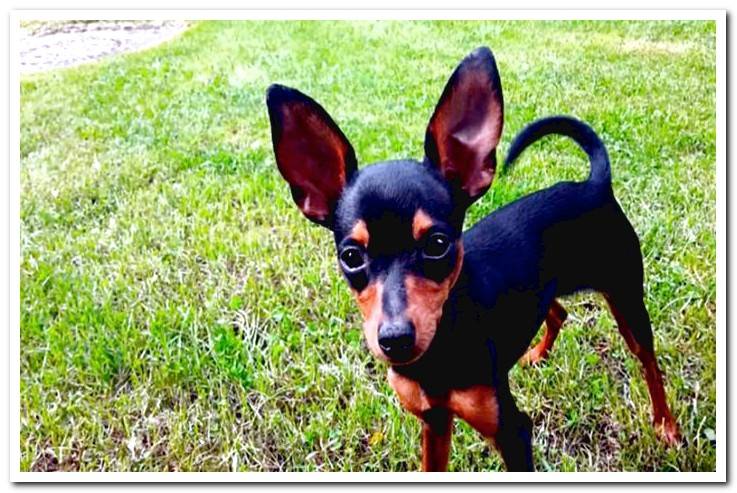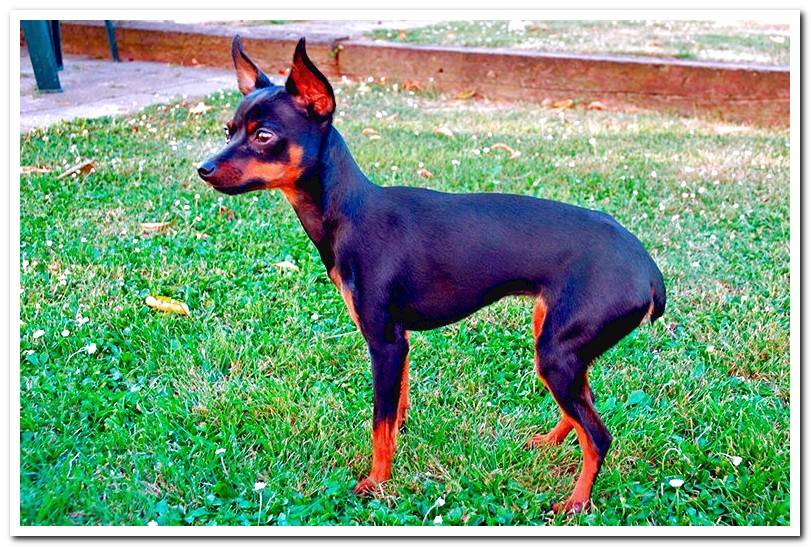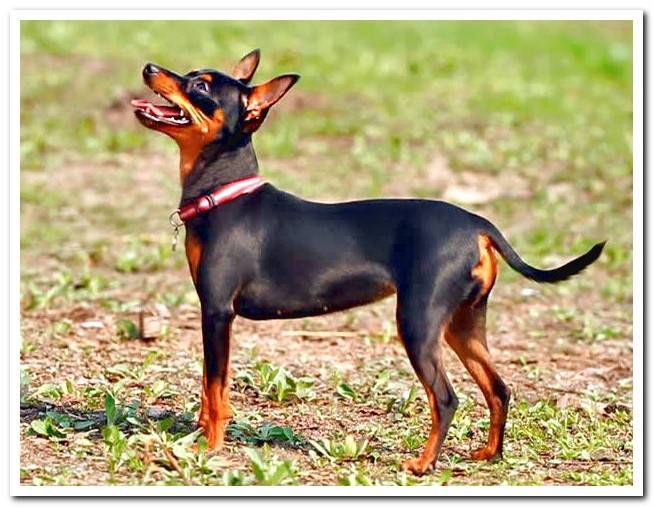
It is considered the smallest pure breed that exists and has recently been officially accepted by the International Cynological Federation (FCI). The Prague Mouse, often mistaken for the Miniature Pinscher or the Chihuahua, is an intelligent as well as affectionate dog.
Little known yet outside Central Europe, it is a great choice as a housemate. If you are thinking of adopting a copy of this breed, do not miss all the details that we have collected for you about its character, care and curiosities.
Index of contents
- 1 Characteristics of the Prague Mouse
- 1.1 How is the official standard of this breed?
- 2 Temperament of a Prague Mouser
- 3 Care for the Prague Mouse breed
- 4 Common Prague Mouse health problems
- 5 Prague Mouse History and Fun Facts
Characteristics of the Prague Mouse
These dogs they have an extremely small body. They are slim and athletic, with well-defined muscles and a firm back. Its head is elongated, with a straight and well chiselled snout that tapers towards the tip.
The eyes are dark, expressive and with a penetrating look. The ears are triangular in shape and large in relation to their size; they usually wear them upright and pointing sideways. The tail, thin and not very long, is inserted in the same line of the back.
|
|
Height between 21 and 23 cm in males and between 18 and 21 cm in females |
|
|
Weight of between 1 and 3 kg in males and females |
|
|
Short, glossy hair and well adjusted to the body. The most frequent color is a combination of black and tan, although there are other variants such as lilac, blue or chocolate and tan |
|
|
Calm, loving, loyal and obedient character |
|
|
Good health although prone to sprains or broken bones |
|
|
Estimated life expectancy between 12 and 14 years |

How is the official standard of this breed?
As size is an essential part of the breed, deviations of more than 1 cm above 23 cm or below 21 cm are not accepted. The fire-colored markings on the cloak should be on the eyes, cheeks and feet, while on the chest they should form two triangles of the same shape and be separated from each other.
Any white spot larger than 1 cm is disqualifying. Truffles must be completely black. An arched back is not accepted, since the back must be very straight. Other faults are droopy ears, blue or yellow eyes and also an excessively curled tail.
Temperament of a Prague Mouser
Friendly and cuddly, the Prague Mice love to be treated with affection. Nowhere will they feel more comfortable than caressing the skirt of their favorite human.
They establish very good relationships with all family members and also with children of all ages. However, you should be very careful when playing games with the little ones at home: being more clumsy they can hurt their fragile little bodies.
In general, these are very active dogs that enjoy outdoor activities to the full, such as walks in the countryside or hiking through mountain areas. The Mice of Prague they have hunting instincts and have a very sharp nose, so they do very well capturing rats in warehouses or in rural houses. They are also highly valued for searching for truffles during the season.
Their need to please and their great intelligence make them easy to train. They respond excellently to training techniques that favor positive reinforcement and early socialization.
The latter is essential, since the lack of contact with their congeners can lead to “small dog syndrome”. It is a condition that leads them to want to permanently attract attention through barking or disobedient behavior.
Care for the Prague Mouse breed
These buzzards are easy to maintain, as they adapt very well to small floors or houses without gardens. However, being energetic, they need a regular outing routine. Several daily walks of about 30 minutes are recommended. Keep in mind that should not exercise too hard This can be counterproductive for your small anatomy.
Caring for the cloak is another plus point if you live in small environments, since it does not shed hair excessively. Brushing should be done thoroughly and weekly.
The bathrooms, on the other hand, only when they are essential. In fact, once every two months will be more than enough. In icy times it is recommended not to bathe them They could get sick easily. For this reason, try to ensure that outings in winter or on very cold days are always warm, since they suffer a lot with low temperatures.

Common Prague Mouse health problems
The most frequent health problems of the Prague Mouse are related to the abnormal growth of some parts of its body, such as the patella area, which often leads to patellar dislocations.
Other common problems are broken bones or joints, due to overexertion or very sudden movements. If you take him in your arms, remember that his anatomy is excessively delicate, so you must do it carefully.
Prague Mouse History and Fun Facts
These dogs come from the Bohemian area, in what is now the Czech Republic. There are documents that trace their origin back to the Middle Ages, a time when they were considered highborn dogs and were among the preferred varieties of local aristocrats.
Over the years they became popular with city dwellers, who used them to get rid of rats. They were especially valued during the era of the black plague, as they were specialists in hunting these rodents, the main transmitters of the disease.
In the late 19th and early 20th centuries, with the arrival of larger and more versatile dogs, the breed fell into progressive decline. For decades they continued to breed on farms and in isolated rural areas of the Czech Republic.
In the last years of the 20th century, the interest in these little ones shot up again, so the international federations returned to put their eye on their qualities. The breed was officially recognized in 2019.
